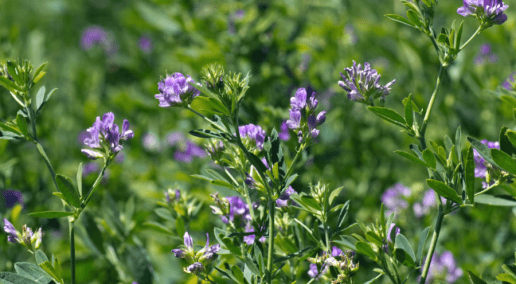Dr. Bart Lardner, professor from the University of Saskatchewan, presented at the CFGA’s 14th annual conference, Forage Resilience in a Changing Landscape: Manage risk. Overcome challenges. Discover opportunities. on Nov. 29, 2023. His presentation focused on pasture management to enhance the benefits from legumes and carbon sequestration.
Grazing has many effects on pasture management and growth and can even be seen as a necessary disturbance. The grazing done by animals helps stimulate new regrowth of herbaceous species, which encourages root respiration and exudation, while also increasing tillering and rhizome production, which improves nutrient cycling. The timing, intensity, frequency and duration of grazing, as well as the soil type, plant species and climate factors all impact the soil organic carbon (SOC) stock capacity and changes.
There are varying findings in literature about the effects of pasture management on total soil matter and SOC. In one study, the SOC decreased over 44 years on rough fescue grassland, due to grazing intensity and stocking density. Another found that there was no change in SOC on rough fescue. And yet again, another reports that the SOC increased, due to the late and light grazing period that was implemented. Therefore, what happens to SOC has everything to do with stocking rates and the amount of litter left after grazing.
When comparing cultivation to restored grassland, SOC is higher in grasslands after eight years, with sod-seeded legumes improving forage quality and maintaining SOC stocks after four years. This data shows that SOC improvements require a long-term commitment by farmers. In perennial pasture systems, SOC cycles more slowly, leading to more secured net carbon.
Grazing has many direct and indirect effects. Direct effects include those such as disturbances to the land (trampling, urination, defecation, etc.). Indirect effects include those such as habitat and environmental modification, which affect botanical composition. These effects can either be immediate or delayed and persist for varying lengths of time. Grazing can also impact soil aggregates, as overgrazing can cause the trampling and overpacking of soil, which impacts water infiltration.
During the second half of his presentation, Bart described the rumen function to better understand where methane comes from. Ruminants evolved to make use of the high-fibre, low-quality roughages (high in cellulose and lignin) found in their environment. To do this, the rumen ferments the feedstuffs using short chain fatty acid (SCFA) production to make the SCFA acetate, propionate and butyrate. The downside of this fermentation process is that a lot of gases are produced, such as nitrous oxide (N2O), carbon dioxide (CO2) and methane (CH4).
Past research on the greenhouse gas (GHG) footprint change in the Canadian beef industry in the last 30 years showed that 15 per cent less GHGs were emitted in 2011 than in 1981, thanks to improved diet and production efficiencies. So how do we reduce enteric emissions through dietary manipulation? The most effective strategy is supplementing ruminant diets with fats and oils, which is much easier in feedlot settings. In extensive pasture grazing systems, supplementing is more difficult, and researchers are still looking at ways to provide these supplements.
On pasture, improving forage stand composition and quality is of great interest to reduce emissions. We can do so by establishing legumes and condensed tannin legumes, as well as increasing the use of alfalfa, cicer milkvetch and sainfoin. Additionally, legume forages provide great benefit to nitrogen stock and lowers inputs.
In summary, SOC can be impacted by grazing intensity, soil type, plant species, as well as climatic factors. By using legumes, like tannin legumes, we can improve forage yield and quality, while also reducing enteric emissions. Overall, more research is being conducted to better understand the complexities of SOC and legume level in pasture systems.
Conference recordings
If you would like to purchase access to the recordings of the 2023 conference proceedings, visit the registration page here . For more information, email [email protected].
Additional Information
Beef Research: The Environmental Hoofprint of Canada’s Beef Industry
Western Beef Development Centre
Back to February 2024



Leave a Comment